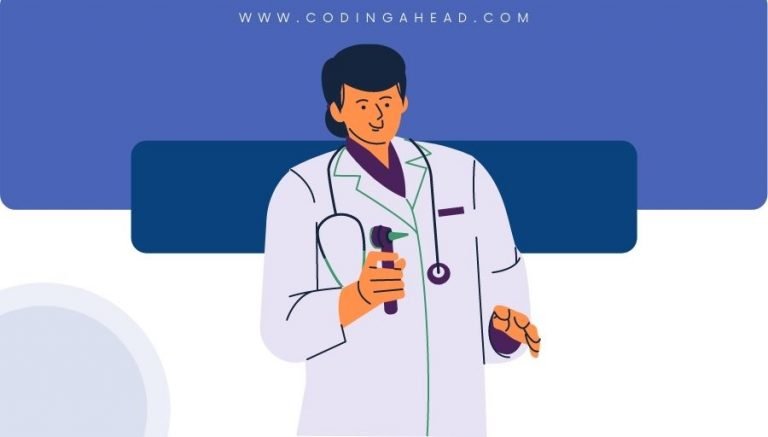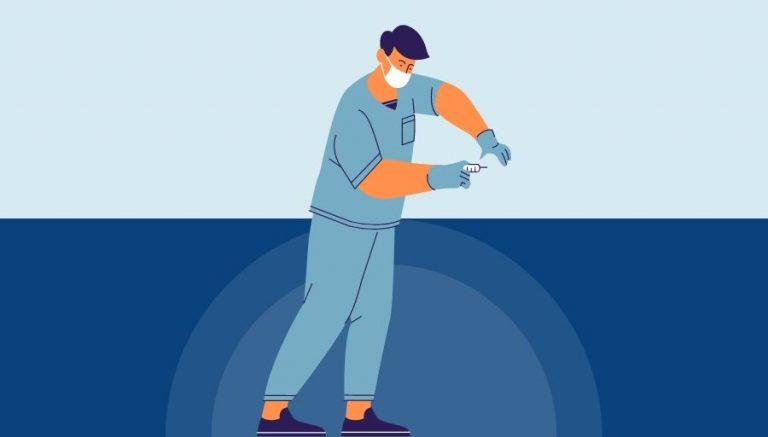How To Use CPT Code 99215
CPT code 99215 is a procedural code used for office or other outpatient visits involving evaluation and management of established patients, requiring a high level of medical decision making and/or 40-54 minutes of total time spent on the encounter. This article will cover the description, procedure, qualifying circumstances, appropriate usage, documentation requirements, billing guidelines, modifiers, comparison to other codes, and examples of cases when CPT 99215 can be used, providing a comprehensive understanding of this code.
1. What is CPT 99215?
CPT 99215 is a procedural code used in medical billing for office or other outpatient visits involving the evaluation and management (E/M) of established patients.
This code is specifically designated for encounters that require a high level of medical decision making (MDM) and/or a total time of 40-54 minutes spent on the encounter. The total time includes both face-to-face and non-face-to-face activities performed by the provider on the date of the encounter.
Examples of these activities include reviewing tests, preparing for the patient visit, performing the exam or evaluation, counseling and educating the patient or caregiver, ordering tests, communicating with other healthcare providers, documenting the encounter, interpreting and communicating results, and coordinating care.
2. 99215 CPT Code Description
The official description of CPT 99215 is: “Office or other outpatient visit for the evaluation and management of an established patient, which requires a medically appropriate history and/or examination and high level of medical decision making. When using time for code selection, 40-54 minutes of total time is spent on the date of the encounter.”
This description highlights the key components of the code, including the setting (office or other outpatient), the patient status (established), the required elements (medically appropriate history and/or examination and high level of medical decision making), and the time criteria (40-54 minutes of total time).
3. Procedure
The procedure for CPT 99215 involves several steps, which may vary depending on the specific circumstances of the encounter. These steps may include:
- Reviewing the patient’s medical history and any relevant test results or other documentation prior to the encounter.
- Performing a medically appropriate history and/or physical examination of the patient, as determined by the provider.
- Evaluating the patient’s condition and determining the appropriate course of action, which may involve ordering additional tests, prescribing medications, or making referrals to other healthcare providers.
- Engaging in high-level medical decision making, which may involve considering multiple diagnoses, weighing the risks and benefits of various treatment options, and determining the most appropriate course of action for the patient.
- Spending a total of 40-54 minutes on the encounter, including both face-to-face and non-face-to-face activities.
- Documenting the encounter in the patient’s medical record, including the history, examination, medical decision making, and any orders or referrals made.
- Billing for the encounter using CPT code 99215, along with any applicable modifiers and additional codes for related services.
4. Qualifying circumstances
There are several factors that determine whether a patient is eligible to receive services billed under CPT code 99215. These factors include:
- The patient must be an established patient, meaning they have previously received professional services from the provider or another provider in the same group and specialty within the past three years.
- The encounter must take place in an office or other outpatient setting, such as a clinic or ambulatory surgical center.
- The provider must perform a medically appropriate history and/or examination, as determined by the nature of the patient’s presenting problem(s) and the provider’s clinical judgment.
- The level of medical decision making involved in the encounter must be high, as defined by the complexity of the problems addressed, the amount and/or complexity of data reviewed and analyzed, and the risk of complications, morbidity, and mortality associated with patient management.
- The total time spent on the encounter, including both face-to-face and non-face-to-face activities, must be 40-54 minutes.
5. When to use CPT code 99215
CPT code 99215 should be used when billing for an office or other outpatient visit involving the evaluation and management of an established patient, provided that the encounter meets the criteria outlined in the code description.
Specifically, the encounter must involve a high level of medical decision making and/or a total time of 40-54 minutes spent on the encounter.
This code is appropriate for use in a variety of clinical scenarios, including complex or chronic medical conditions, multiple comorbidities, or situations where the provider must weigh the risks and benefits of various treatment options in order to determine the most appropriate course of action for the patient.
6. Documentation requirements
In order to support a claim for CPT 99215, the provider must document the following information in the patient’s medical record:
- A medically appropriate history and/or physical examination, as determined by the provider based on the nature of the patient’s presenting problem(s) and the provider’s clinical judgment.
- The high level of medical decision making involved in the encounter, including the complexity of the problems addressed, the amount and/or complexity of data reviewed and analyzed, and the risk of complications, morbidity, and mortality associated with patient management.
- The total time spent on the encounter, including both face-to-face and non-face-to-face activities, with a breakdown of the specific activities performed and the time spent on each.
- Any orders, referrals, or other actions taken by the provider during the encounter, along with the rationale for these actions.
7. Billing guidelines
When billing for CPT code 99215, providers should adhere to the following guidelines and rules:
- Ensure that the encounter meets the criteria outlined in the code description, including the patient status (established), the setting (office or other outpatient), the required elements (medically appropriate history and/or examination and high level of medical decision making), and the time criteria (40-54 minutes of total time).
- Document the encounter in the patient’s medical record, including the history, examination, medical decision making, and any orders or referrals made, as well as the total time spent on the encounter and a breakdown of the specific activities performed.
- Submit the claim using CPT code 99215, along with any applicable modifiers and additional codes for related services.
- Ensure that the billed services are medically necessary and supported by the documentation in the patient’s medical record.
- Follow any payer-specific guidelines or requirements related to billing for E/M services, including the use of modifiers, the submission of supporting documentation, and the timely filing of claims.
8. Modifiers
Modifiers can be used with CPT 99215 to provide additional information about the encounter or to indicate that the service was performed under specific circumstances. Here are five common modifiers that may be used with CPT 99215 and their explanations:
- Modifier 25: Significant, separately identifiable E/M service by the same physician or other qualified healthcare professional on the same day of the procedure or other service. This modifier is used when the provider performs a separate E/M service during the same visit as the 99215 encounter. The additional E/M service must be distinct and unrelated to the 99215 service, and the documentation should clearly support the separate nature of the services.
- Modifier 57: Decision for surgery made within the global surgical period. This modifier is used when the provider makes a decision for surgery during the 99215 encounter, and the surgery is scheduled within the global surgical period. The documentation should clearly indicate the decision for surgery and its relationship to the 99215 service.
- Modifier 95: Synchronous telemedicine service rendered via a real-time interactive audio and video telecommunications system. This modifier is used when the 99215 encounter is conducted through telemedicine, using real-time audio and video communication between the provider and the patient. The provider must adhere to any specific telemedicine requirements, such as obtaining patient consent and documenting the use of telemedicine in the patient’s medical record.
- Modifier 22: Increased procedural services, indicating that the work required to provide the service was substantially greater than typically required. This modifier is used when the complexity of the 99215 encounter is significantly higher than usual, due to factors such as the patient’s medical history, comorbidities, or the complexity of the medical decision making. The documentation should clearly support the increased complexity and the additional work performed by the provider.
- Modifier 52: Reduced services, indicating that the service provided was less than the full description of the code. This modifier is used when the 99215 service is not performed to its full extent, due to factors such as the patient’s condition or the provider’s clinical judgment. The documentation should clearly explain the reasons for the reduced service and how it differs from the standard 99215 encounter.
9. Examples
Here are 10 examples of cases when 99215 CPT code can be used and an explanation of why:
- A patient with multiple chronic conditions, such as diabetes, hypertension, and heart failure, requires a comprehensive evaluation and management, including medication adjustments, referrals to specialists, and extensive patient education. The provider spends 45 minutes on the encounter, including reviewing the patient’s medical history, performing a detailed examination, and engaging in high-level medical decision making.
- A patient presents with a complex and undiagnosed medical condition that requires the provider to review extensive medical records, order multiple diagnostic tests, and consult with other healthcare professionals. The provider spends 50 minutes on the encounter, including performing a detailed history and examination, analyzing the data, and determining the most appropriate course of action.
- A patient with a history of cancer requires a follow-up visit to discuss the results of recent imaging studies and determine the need for further treatment. The provider spends 40 minutes on the encounter, including reviewing the test results, discussing the potential risks and benefits of various treatment options, and engaging in high-level medical decision making.
- A patient with a complicated wound requires a thorough evaluation and management, including wound care, dressing changes, and antibiotic therapy. The provider spends 45 minutes on the encounter, including performing a detailed examination, assessing the wound, and determining the most appropriate treatment plan.
- A patient with a history of substance abuse requires a comprehensive evaluation and management, including a detailed history, examination, and discussion of treatment options. The provider spends 55 minutes on the encounter, including engaging in high-level medical decision making and coordinating care with other healthcare professionals.
- A patient with severe depression and anxiety requires a detailed evaluation and management, including a thorough history, examination, and discussion of treatment options. The provider spends 48 minutes on the encounter, including engaging in high-level medical decision making and coordinating care with other healthcare professionals.
- A patient with a complex neurological disorder requires a comprehensive evaluation and management, including a detailed history, examination, and discussion of treatment options. The provider spends 52 minutes on the encounter, including engaging in high-level medical decision making and coordinating care with other healthcare professionals.
- A patient with a history of chronic pain requires a detailed evaluation and management, including a thorough history, examination, and discussion of treatment options. The provider spends 46 minutes on the encounter, including engaging in high-level medical decision making and coordinating care with other healthcare professionals.
- A patient with a complicated pregnancy requires a comprehensive evaluation and management, including a detailed history, examination, and discussion of treatment options. The provider spends 43 minutes on the encounter, including engaging in high-level medical decision making and coordinating care with other healthcare professionals.
- A patient with a history of multiple sclerosis requires a detailed evaluation and management, including a thorough history, examination, and discussion of treatment options. The provider spends 54 minutes on the encounter, including engaging in high-level medical decision making and coordinating care with other healthcare professionals.





